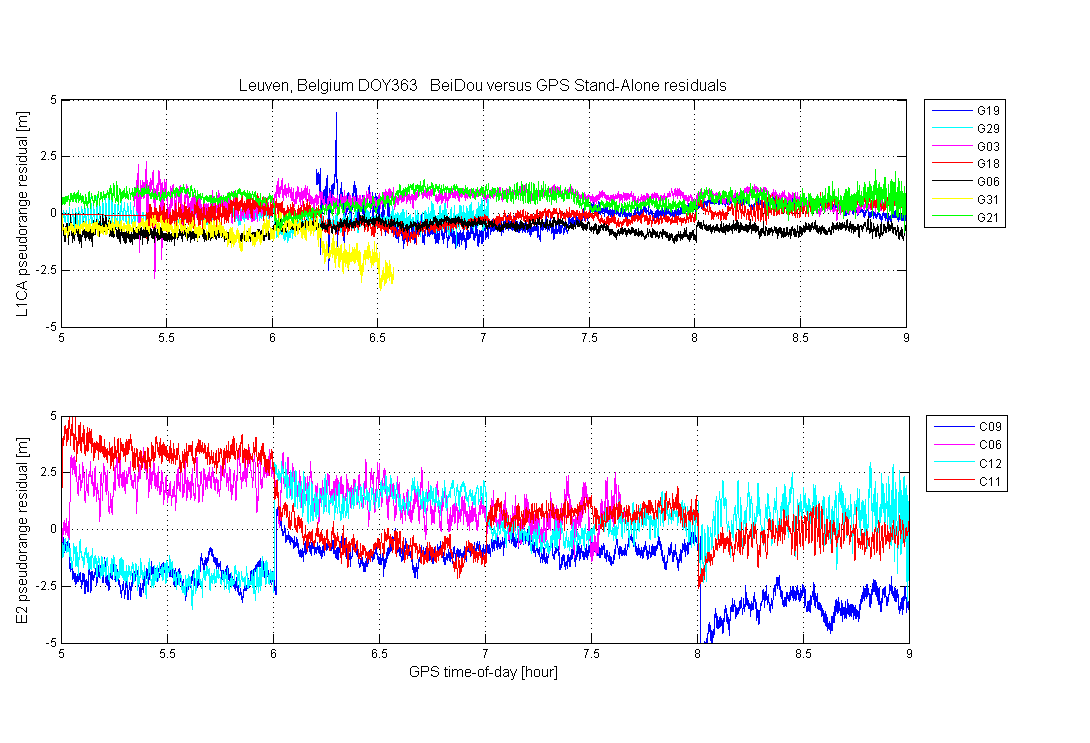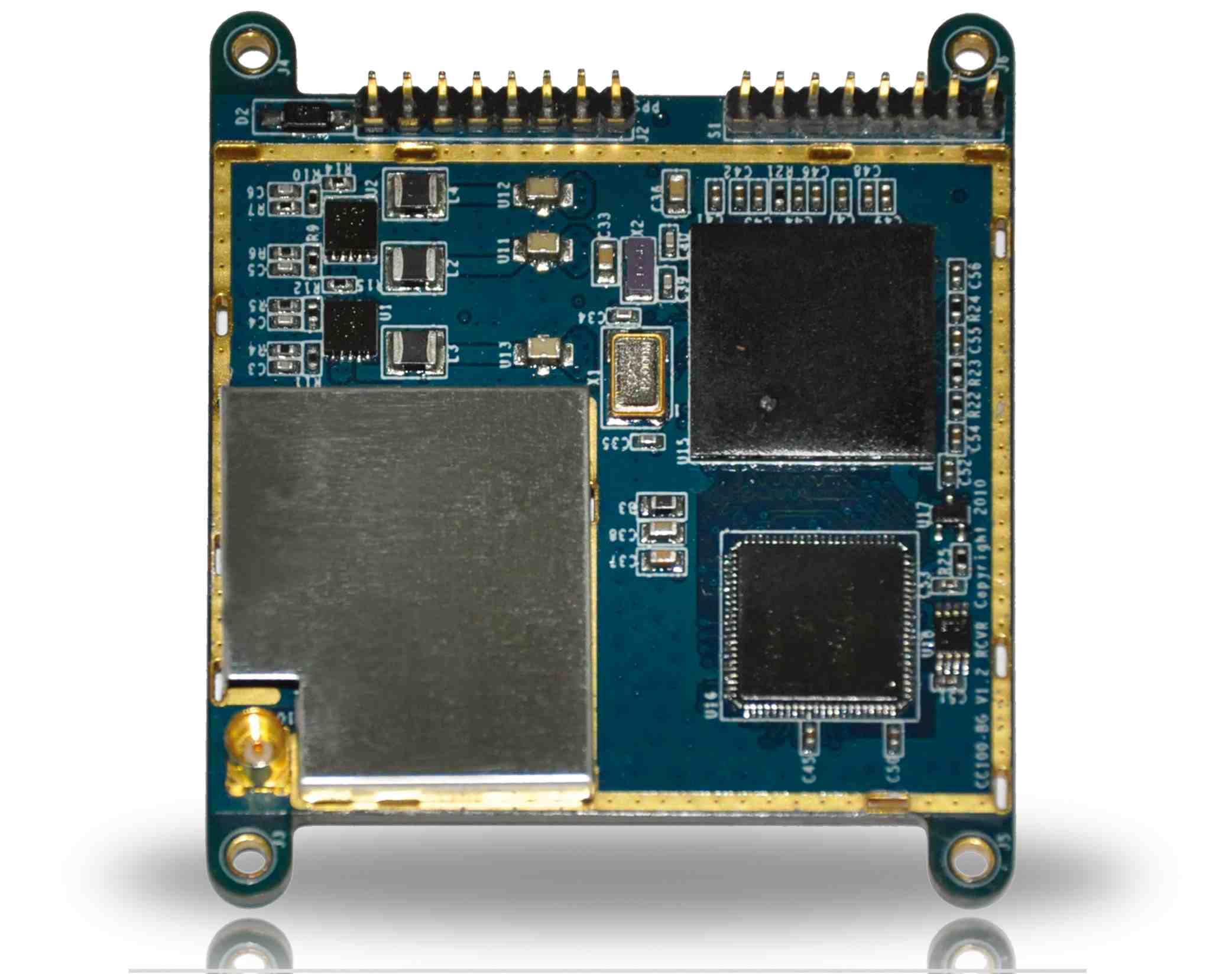 Figure 2. L1 pseudorange residuals (m) for GPS (L1 C/A, top) and COMPASS (B1-I, bottom) vs. time of day (hour).
Figure 2. L1 pseudorange residuals (m) for GPS (L1 C/A, top) and COMPASS (B1-I, bottom) vs. time of day (hour).Septentrio reported today (January 8, 2013) that the Belgium-headquartered GNSS receiver manufacturer has successfully computed a position/velocity/time (PVT) calculation using BeiDou/Compass satellites in a three-constellation (GPS+GLONASS+BeiDou) solution.
"We are positively surprised of the better than expected performance coming out of what we characterize to be ‘a quite mature constellation,’” Laurent Le Thuaut, Septentrio’s business development manager, told Inside GNSS in an e-mail.
Septentrio reported today (January 8, 2013) that the Belgium-headquartered GNSS receiver manufacturer has successfully computed a position/velocity/time (PVT) calculation using BeiDou/Compass satellites in a three-constellation (GPS+GLONASS+BeiDou) solution.
"We are positively surprised of the better than expected performance coming out of what we characterize to be ‘a quite mature constellation,’” Laurent Le Thuaut, Septentrio’s business development manager, told Inside GNSS in an e-mail.
The company completed the implementation of BeiDou support in the its PVT engine — a PolaRx4 platform with modified firmware — by updating of receiver software. The PVT results were obtained just days following the official release of BeiDou’s Interface Control Document (ICD).
Septentrio engineers are currently processing further data sets to finalize the implementation of full BeiDou support. Although the BeiDou constellation is still being deployed, the data analysis already shows promising results. The top panel of Figure 1 compares the height from the stand-alone solution of GPS-only versus the now ubiquitous GPS+GLONASS solution and the inclusion of BeiDou.
The value added by BeiDou is more than what was expected from a constellation that is still being deployed, according to Septentrio. Although the solution is not aided by differential corrections, the overall position shows an increase in accuracy when sufficient BeiDou satellites are included in the solution.
The bottom panel of Figure 1 shows that, even with the current BeiDou constellation, the total number of GNSS satellites used to calculate the PVT reached 26 over the European region for a short moment, including 4 Compass satellite; two inclined geosynchronous orbiting (IGSO) satellites, identified by their pseudorandom noise codes (PRNs) 6 and 9, and two middle Earth orbiting (MEO) satellites, PRNs 11 and 12.
Figure 2 shows the L1 pseudorange residuals for all constellations individually. During the campaign, Septentrio engineers captured a specific dataset
where the receiver was tracking 40 satellites in total, including 9
Compass satellites.
This comparison highlights the advantage of the GPS constellation, which builds on two decades of real-time orbit prediction. The BeiDou orbits are quite accurate for a relatively young constellation, but show typical meter-level jumps when ephemerides are updated, according to Septentrio’s evaluation.
Septentrio has tracked BeiDou signals since 2007, when the capability was first demonstrated on a Septentrio hardware platform, although a position calculation . A draft version of the BeiDou signal-in-space specification (SIS ICD) was published in December 2011 but did not specify the navigation data content.
On December 27, 2012, version 1.0 of the BeiDou SIS ICD was released, containing details of the navigation data. This information has now been incorporated into the Septentrio receiver software and has resulted in the successful demonstration of GPS+GLONASS+BeiDou PVT solutions, according to the company.
Septentrio says that the new feature will soon become available on selected Septentrio platforms. Users of multi-constellation receivers will then benefit from the additional constellation in multiple ways. For example, urban availability and signal integrity will be further improved thanks to the augmented signal coverage.





